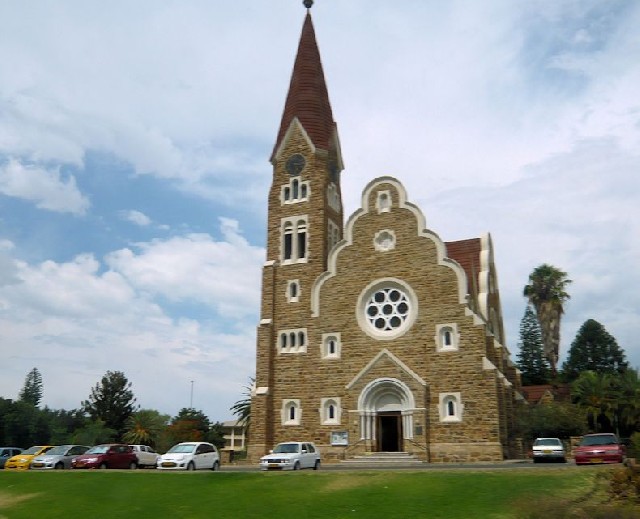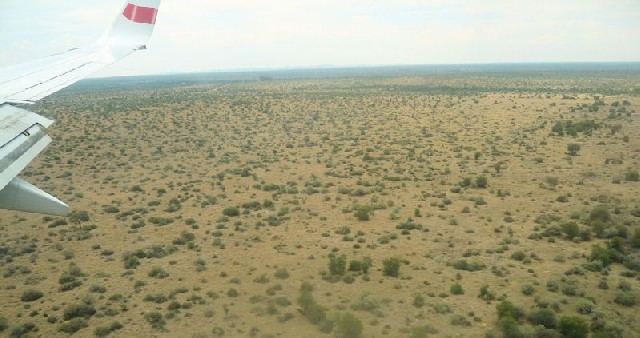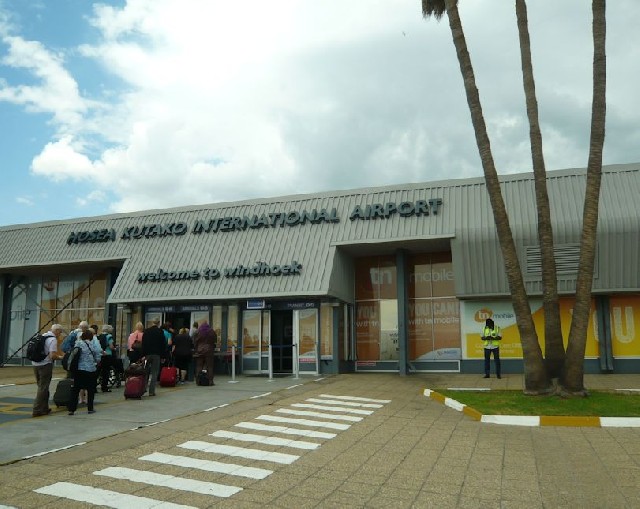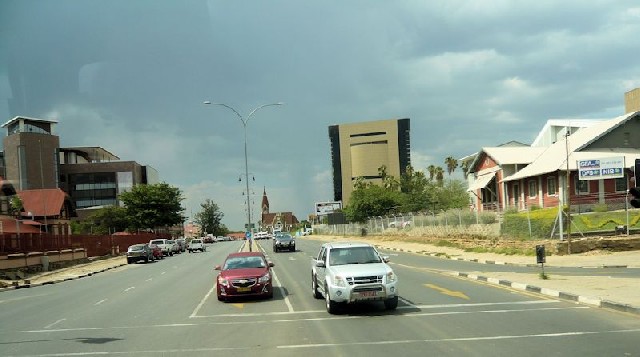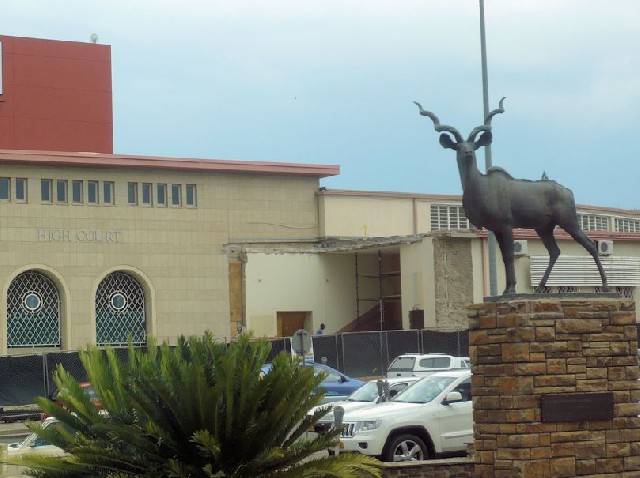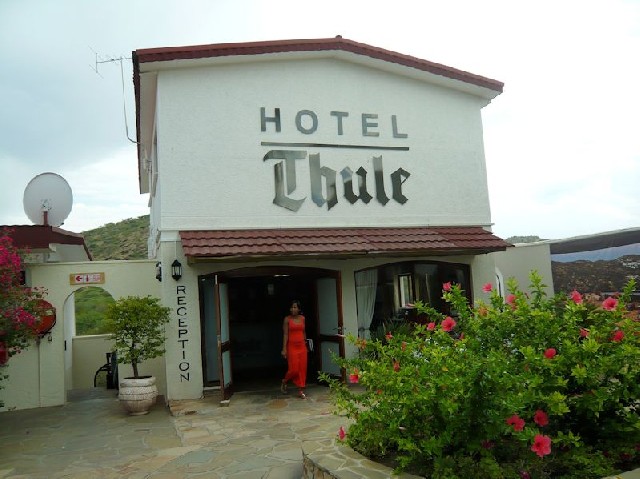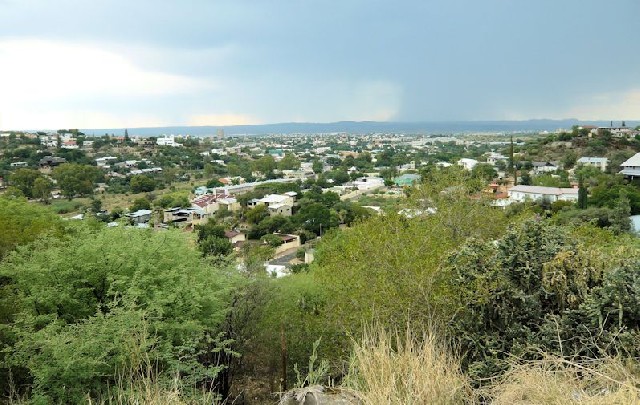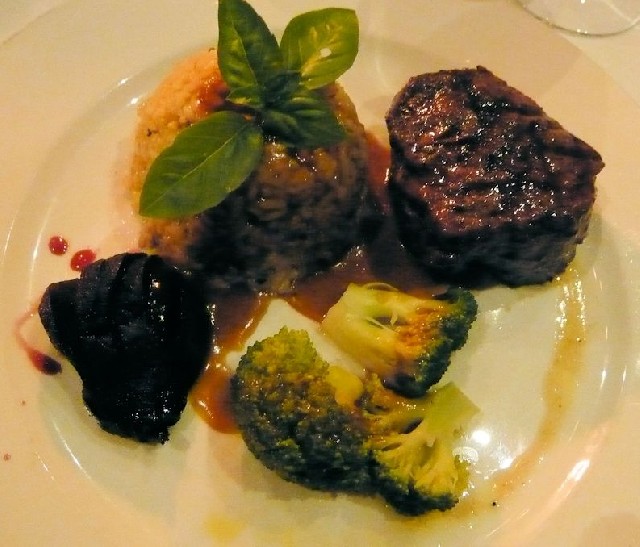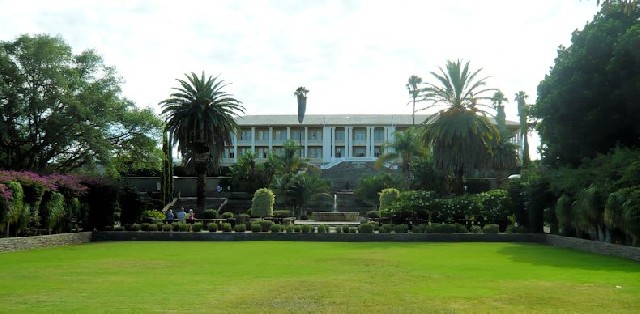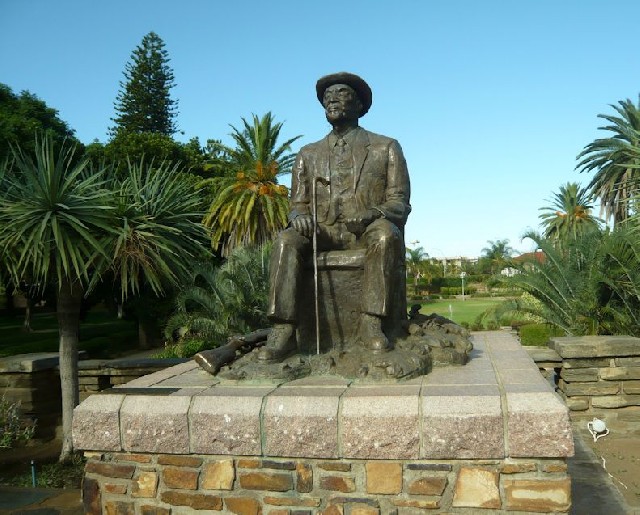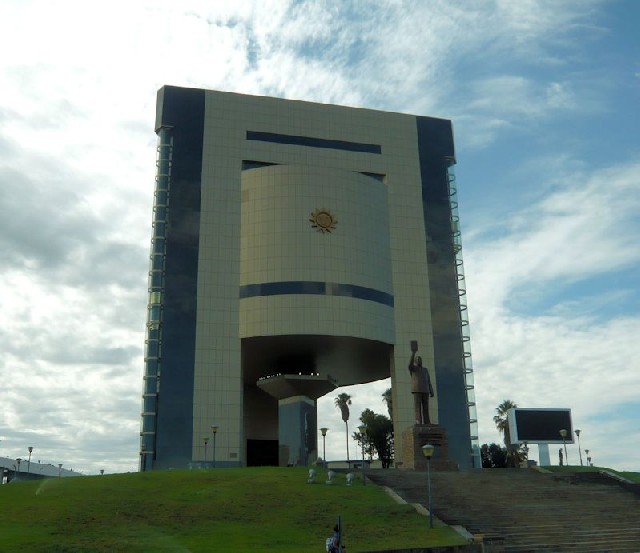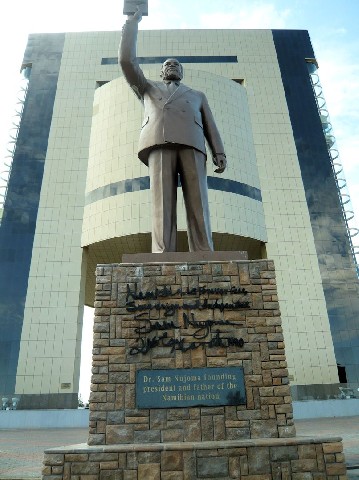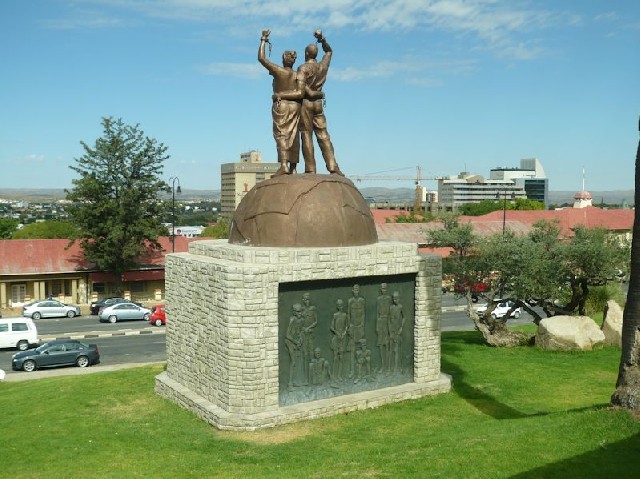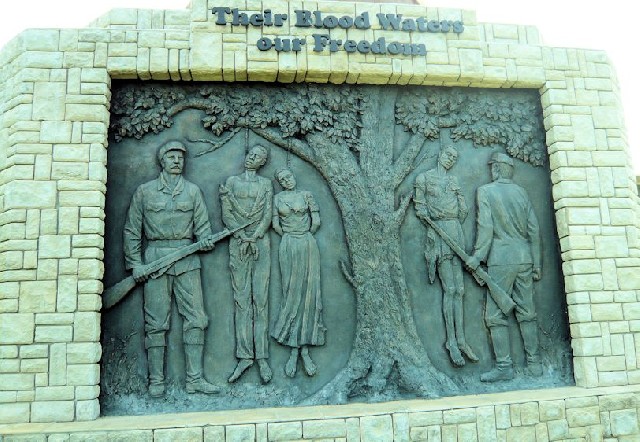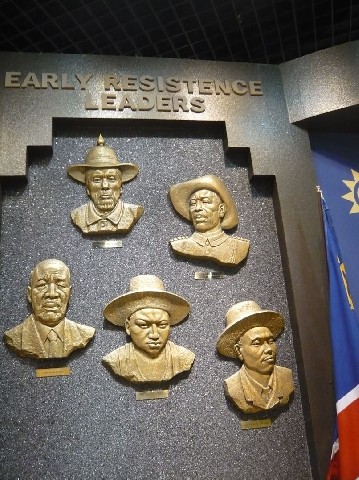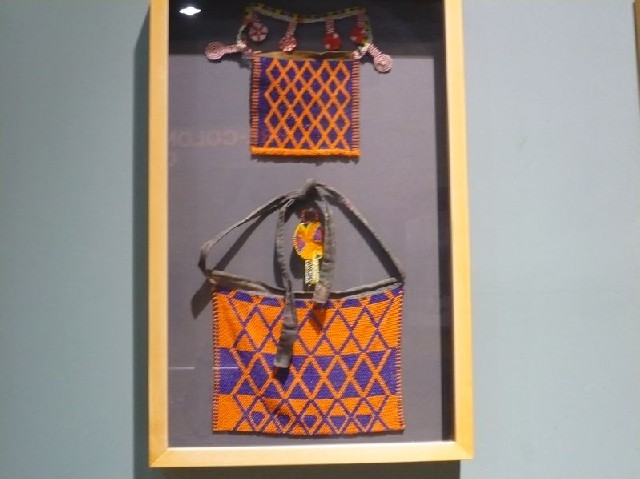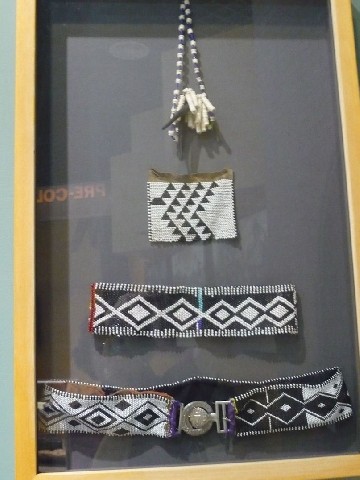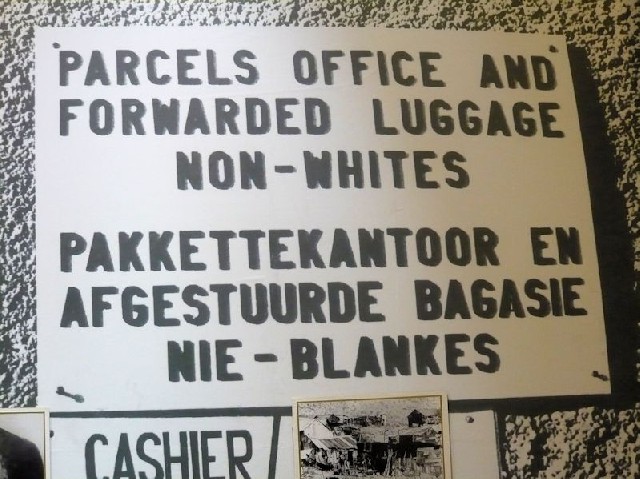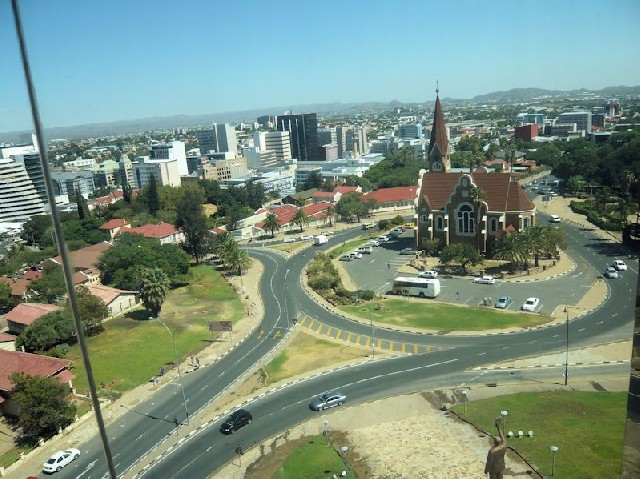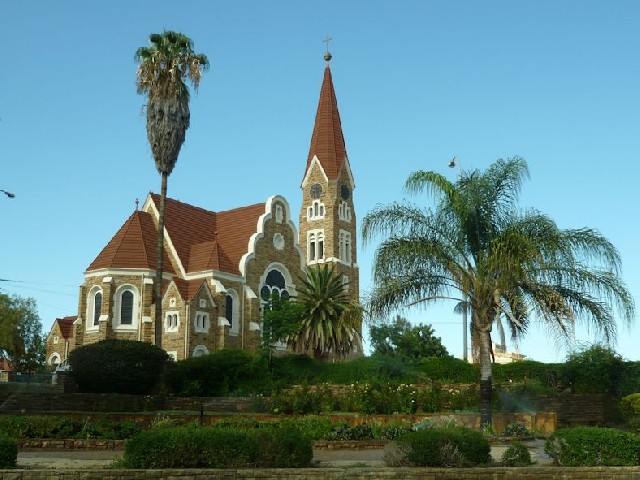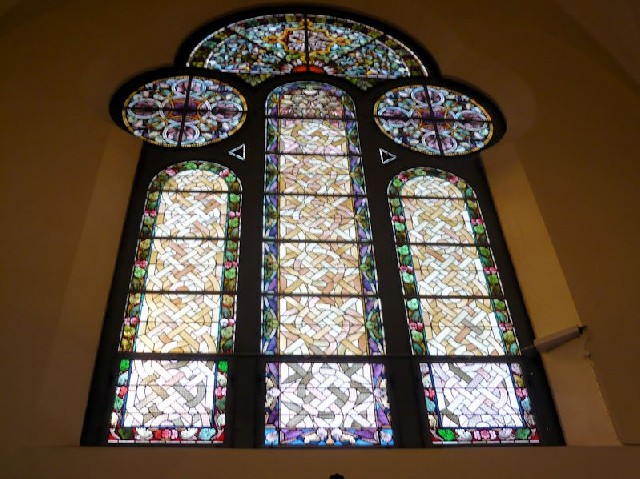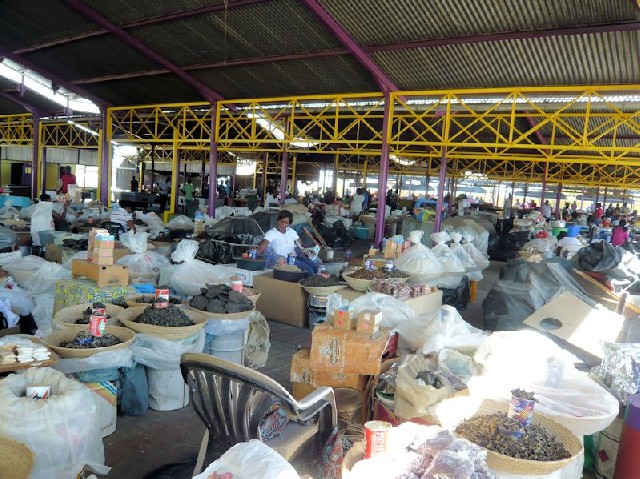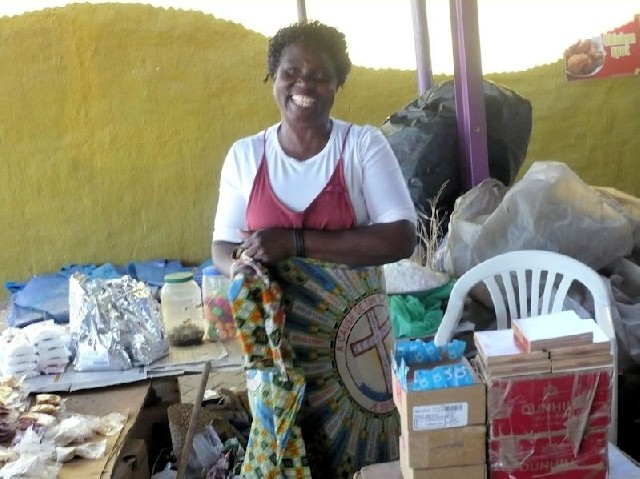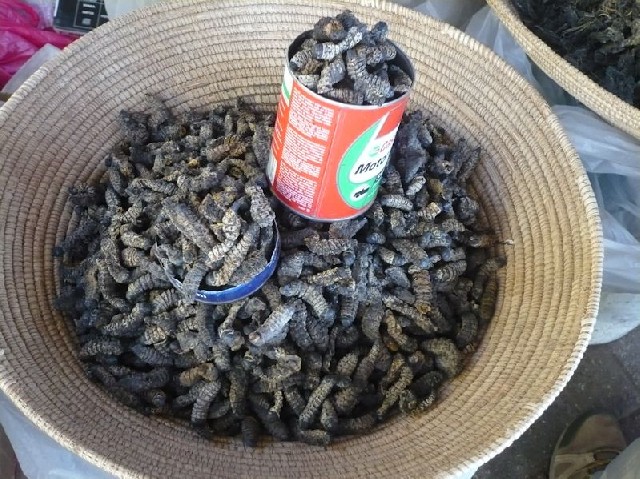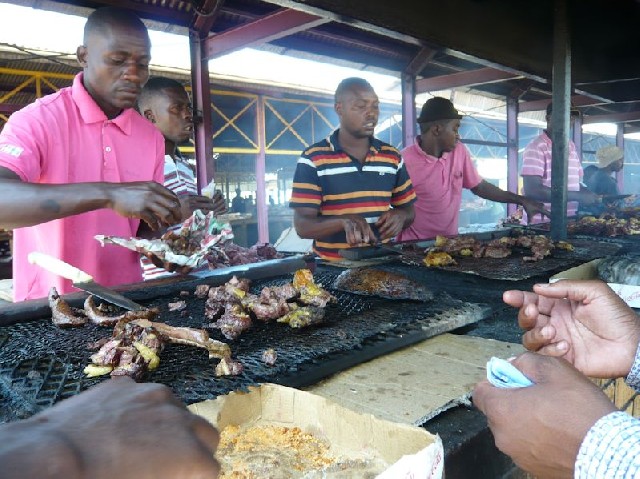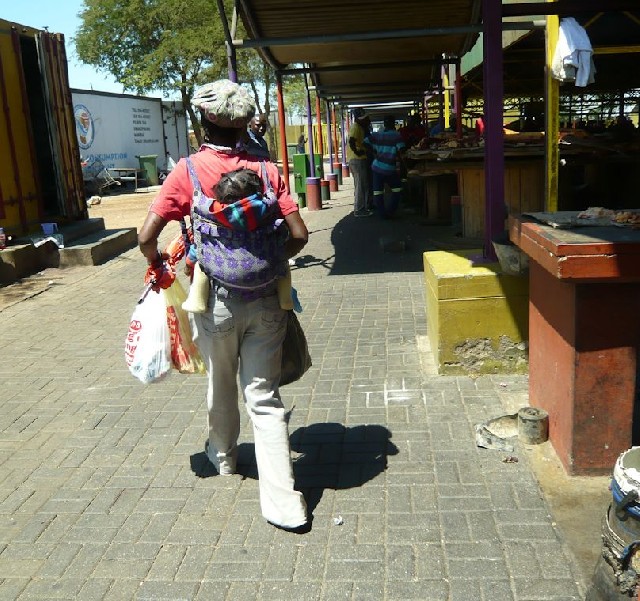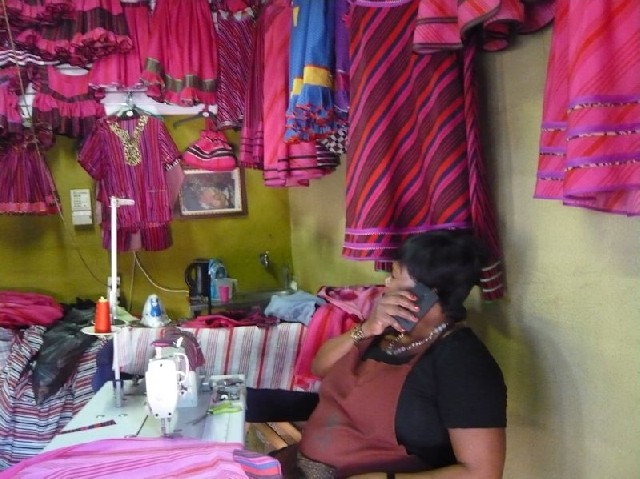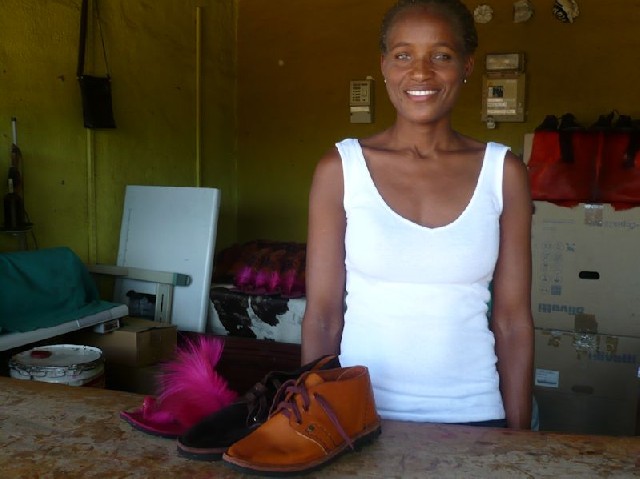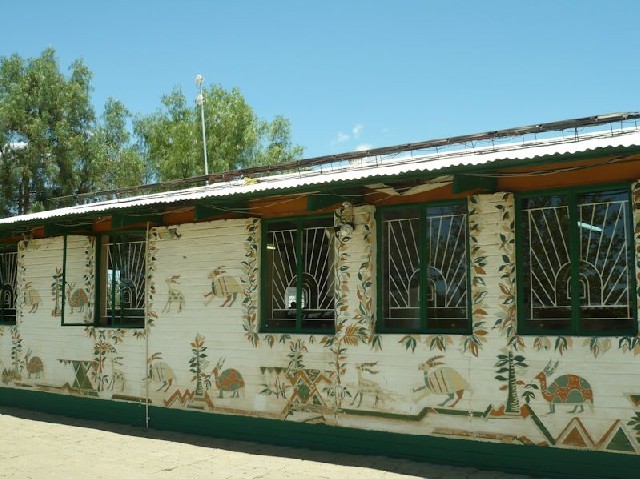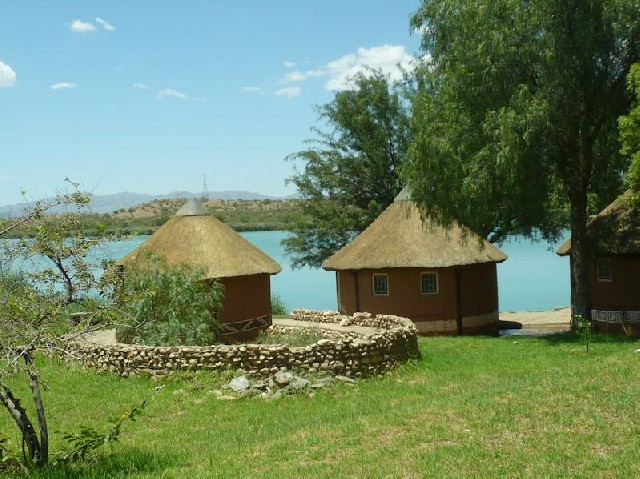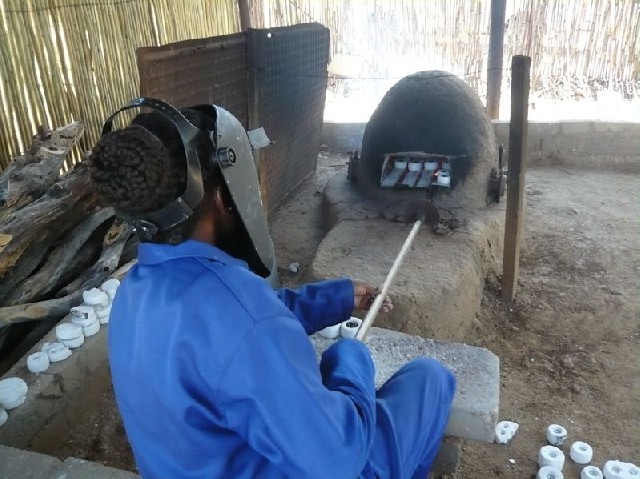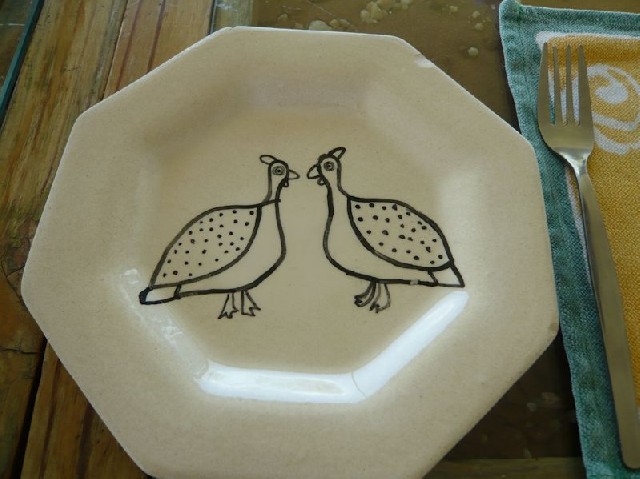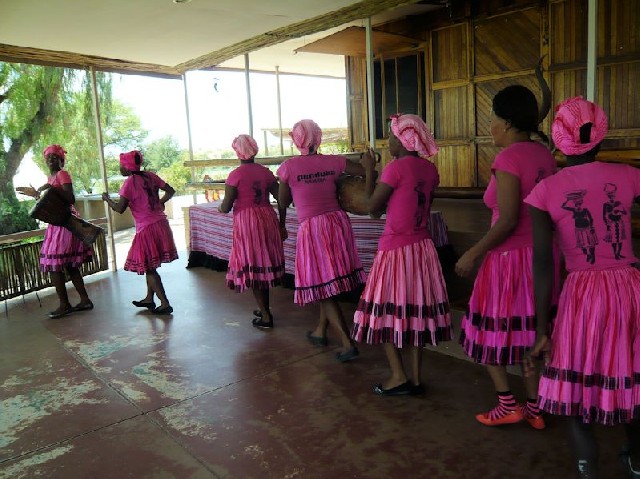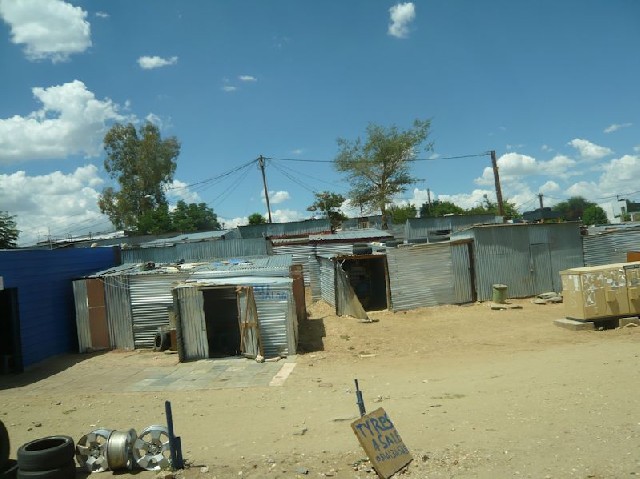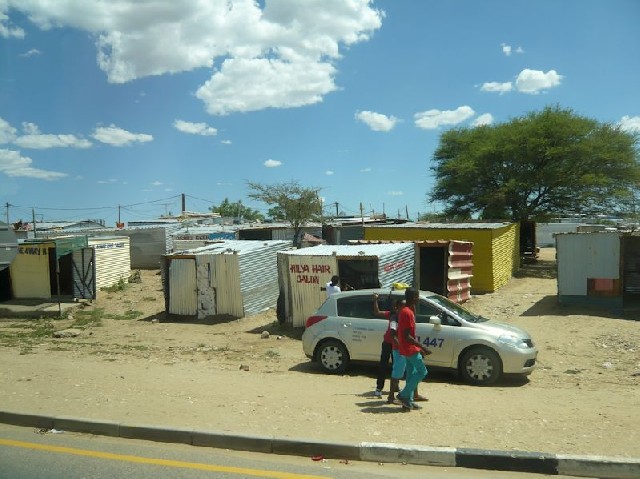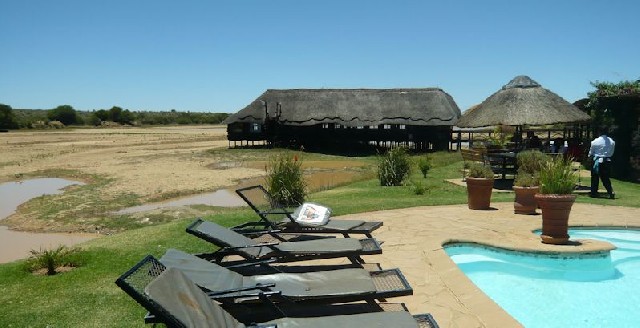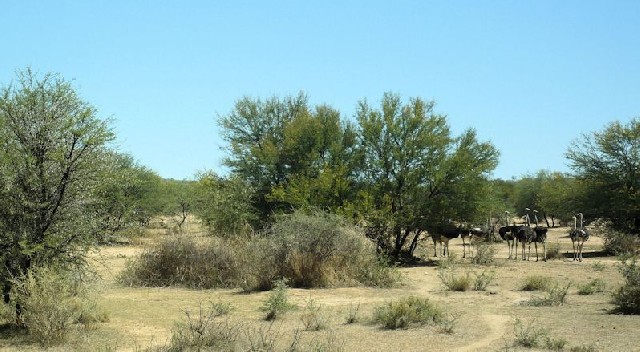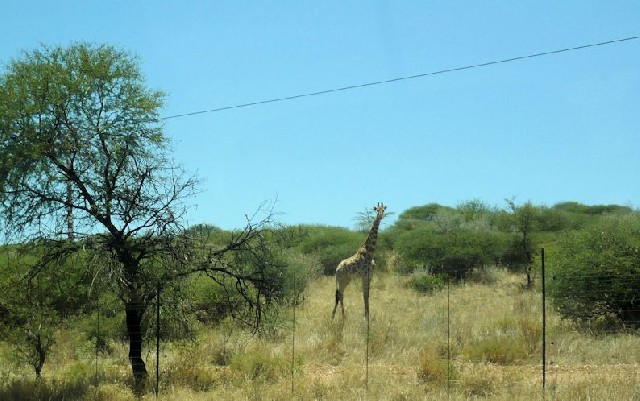Namibia: Part One
Windhoek, capital city
By: Zeren Earls - Mar 25, 2015
After paralyzing Boston for three days, the snow finally stopped, giving me hope that I might be able to get out of the city the next day for my scheduled departure to Namibia, my chosen destination for this year’s February get away. Since I live near public transportation, I was under the illusion that I could get to the airport on my own, until I heard over the radio that the governor had ordered the subway shut down for 24 hours in order to defreeze the tracks. Consequently, it became impossible to get through to any cab company, as they were all overburdened with calls from customers. As luck would have it, my friend Martha called and, hearing my predicament, offered to dig out her car to get me to the airport. Whew!
Fearing a delayed departure, I requested to be moved up near the exit for the first leg of the flight to Amsterdam, to ensure my two-hour connection for the long journey ahead to Johannesburg. Amazingly, the Delta/KLM flight left on time, allowing for a comfortable dash to the next flight, which offered two meals and two snacks during the 10-hour trip. As the plane neared our destination, the pilot announced it was 30 degrees C in Johannesburg. Warm weather at last!
Since my flight to Namibia was the next morning, requiring an overnight hotel stay in South Africa, I had to clear passport control. Approaching the carousel for luggage pick up, I heard my name over the loud speaker, asking me to report to the KLM office. Puzzled, I walked over, only to find out that my luggage was still in Amsterdam. Receiving assurance that it would arrive on the same flight the following evening and would be sent to my hotel in Namibia within a day, I exited the airport to meet the guide sent by the local office of Overseas Adventure Travel.
Despite the delayed luggage, the friendly welcome and warm breezes helped overcome my exhaustion; I felt exhilarated to have arrived in Africa. Feeling fortunate that I had packed an extra T-shirt and toothbrush in my carry-on luggage, I dropped off to sleep around midnight local time, seven hours ahead of EST. Following a good night’s sleep and an ample breakfast buffet of fresh tropical fruit and hot and cold local fare at the Tambo Hotel, I felt ready to begin my two week adventure.
Meeting the other five members of the group, who had arrived earlier from western US states, we left for the airport to fly to Windhoek, capital city of Namibia, a country of 2.1 million, bordered by South Africa, Botswana, Angola and the Atlantic Ocean. After a two-hour flight, we arrived at Windhoek International Airport in the middle of a vast flat land surrounded by mountains. Met by our Namibian trip leader, Joel, we piled into a van for our 40-minute ride to the city.
Looking out the window as we traveled, I noticed that people drove on the left side of the street. This is a legacy of the British, who defeated German colonizers of West Africa from 1884 until World War I, annexing the land to South Africa, which they ruled. However, strong influences of the German colonial era were evident in the city’s orderly urban layout and the Bavarian architecture of historic buildings, such as the landmark Christuskirche, the Lutheran church. A sculpture of an Oryx, Namibia’s national animal, graced the main thoroughfare. A wide avenue was named after Nelson Mandela.
Arriving at the Thule Hotel, our home for the next two nights, we were welcomed by champagne and cake in the lobby. Situated on a hill, the hotel had a sweeping view of Windhoek, which means “windy corner” in Afrikaans. After getting acquainted with our beautiful surroundings, we left for our Welcome Dinner at the Culinary School of Namibia. The menu included an appetizer of soy-marinated beef strips on salad greens, then char-grilled Oryx loin, brown rice, broccoli, and poached pear as main dish, followed by cheese cake with raspberry sauce for dessert. Namibian red wine accompanied this delicious meal, which was presented artfully throughout the evening.
In the morning we left the hotel early for a day-long tour of Windhoek, which has a population of 375,000. The city’s longest street, Independence Avenue, pays tribute to the founding of the nation in 1990, following the withdrawal of South Africa and the end of the apartheid system imposed on Namibia. Our first stop was the Tintenpalast, home of the National Assembly, originally built for the German government with slave labor. The building faces extensive grounds with flower beds, shrubs, and arbors, and features bronze statues, including a missionary with bible in hand and an African hero with a gun on one side and fire on the other.
Next to the Parliament building is the Independence Museum, a modern three-story building honoring Namibia’s history. Built by a South Korean construction company, the museum’s first floor is dedicated to the nation’s colonial history. The second floor portrays its struggle to gain independence and freedom from apartheid with help from China, Cuba, and Russia, resulting in an agreement for South Africa to pull out of Namibia, provided the communist countries did as well. The third floor presents a shining independent nation, with stories of its flag, founding president Dr. Sam Nujoma, and parliamentarians, elected by the “zebra system,” which ensures a balance of male and female representation. On the diagonally arranged, multi-colored flag, white stands for peace, red for heroism, green for nature, and blue for the sky and ocean. A golden sun on the blue band symbolizes life. Crafts in display cases pay tribute to the artisans, who fashioned beautiful objects despite the hardships they endured.
A ride in the glass elevator along the exterior of the Independence Museum offered a sweeping view of the city, with the Lutheran Church as the landmark, built to symbolize the triumph of European colonists over native cultures. Constructed of local orange sandstone with white trim, the church features stained-glass windows brought from Germany and an altar of Carara marble from Italy. The 500-seat church, which once served as both a church and a school, is today a national monument.
Our tour continued to Katutura (meaning “We have no permanent place” in Herero), a township where all black people were once deported from the city. Although Africans may live anywhere now, Katutura is still predominantly black. We walked through the market, getting acquainted with roasted mopane worms, a major source of protein, and watching butchers chop beef into small chunks to be cooked over an open fire. Served on folded newspaper, the cooked beef strips were dipped in salt, pepper and other spices, and then consumed on the go. Small specialty shops nearby were crammed with party dresses, school uniforms, and fabric hats fashioned after cow horns and stitched by women on the premises. Shoe shops displayed kudu antelope skin styles in different colors. Business was brisk at salons offering hairdos of tiny braids.
Penduka (meaning “wake up”) is a cultural center, where women make and sell crafts such as embroidery, ceramics, and glass beads. Following a tour of the various workshops, we enjoyed a traditional lunch of chicken drumsticks or beef, black-eyed peas, rice, and polenta. Afterwards women treated us to a spirited dance performance along with singing and drumming.
Calling it a day, we returned to the hotel to enjoy a free evening on our own. Some in the group decided to return to the town center for a traditional Bavarian meal and beer. I opted to stay at the hotel to enjoy the terrace restaurant with a city view below. This was also an opportunity to see upscale Namibians, most of whom are European, arrive in their finery for drinks and dining. In a country ruled by foreigners until 1990 and where black people required permits to live and work in urban areas until 1977, it will take time for African Namibians to have an upper urban class. Wealth among blacks resides in ownership of farmlands in rural areas. Regardless, unlike some African countries, there seems to be an apparent peace here among Africans and Europeans, reconciled to live peacefully as one nation.
The next morning we looked forward to our trip to the Namib Desert, the second adventure on our itinerary. On the way to the airport, we stopped at the Heja Game Lodge, run by a German family, for our first sighting of wildlife in Namibia. Upon seeing us, a group of ostriches and a beautiful giraffe raised their heads as if to say “welcome”. At the reserve we also enjoyed a pizza and salad lunch.
At Windhoek International Airport, we reported to the guest lounge of Wilderness Safaris, the operator of our campsites and flights between camps. This is where our soft-sided duffel bags were checked to make sure we complied with the total weight limitation of 44 pounds, including hand luggage. Waiting for the other passengers on our 12-seat plane, my eyes wandered to the photos on the walls. Those of the Sossusvlei region of the Namib Desert’s landscape of towering sands were so arresting I could hardly contain my excitement that this was our next destination.
(To be continued)

